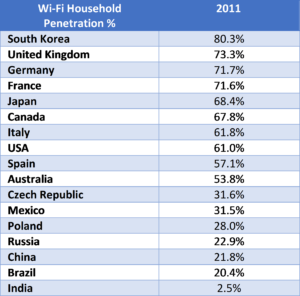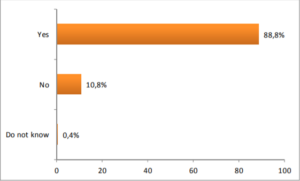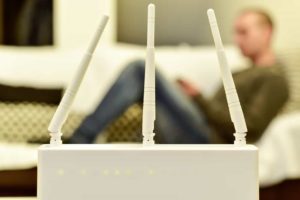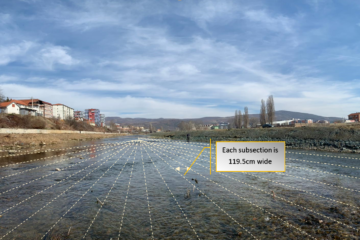Internet and WiFi
Safe distance from a Wi-Fi router?
Levels of electromagnetic radiation from wireless technology continue to grow as the Internet providers trying to cover even the most remote places in order to expand their business and reach every single customer out there, expanding the number of wireless devices used at schools, work or home.
Below is a table based on a study on Wi-Fi household penetration, conducted by the Strategy Analytics in year 2011. in 17 countries.

Source: Strategy Analytics Connected Home Devices service, April 2012; 17 countries included in study
According to a study conducted by Strategy Analytics, there were 439 million households worldwide with installed Wi-Fi networks, which would be equival to 25 percent of all households. According to their predictions the total number of Wi-Fi households in the world shall reach around 800 million in 2016.
Kosovo and Internet
According to a survey conducted by the Kosovo Agency of Statistics in year 2017, 61.3% of all households in Kosovo had access to a computer, while 38.7% of population had no access to any sort of computer equipment, excluding mobile phones.
Things get interesting when one observes the results of the Internet penetration in Kosovo. According to the same survey, Kosovo population has a staggering 88.8% of Internet penetration, ranking it first in Balkans for being online.

Source: Kosovo Agency of Statistics report – http://ask.rks-gov.net/media/3831/tik-2017-ang.pdf
What are the reasons for so many people being online? There are in fact three main reasons for it. The first reason is a general, overall trend and the way of life. Internet has become a part of our daily lives. People do everything over the internet, run their business, advertise their companies, communicate with each other, study, start romance etc.
The second reason for such high penetration is Kosovo’s very young population who expand and maintain their social circle through social networks and Internet communication services. And the third reason being Kosovo’s population that lives abroad who uses Internet as the cheapest and the most convenient way to maintain their links with friends and families in Kosovo.
There are no precise data on the number of Internet users supplied with Wi-Fi routers but one can assume that majority of those 88.8% of users have a Wi-Fi router in their homes. And it all comes at a price of electromagnetic radiation emitted by those routers.
Types of electromagnetic radiation
Electromagnetic radiation can be one of high and low frequency, ionizing and non-ionizing. Wi-Fi routers emit electromagnetic radiation that travels in a wave form, with speeds equal to a speed of light. Low-frequency radiation, such as those used by Wi-Fi routers, represents a risk to our health when an individual is exposed to it for a longer period of time, meaning it has a cumulative effect.
Safe distance from a Wi-Fi router?
Is there a way to determine a distance that would be considered safe? It’s not always easy determining how far should we positioned ourselves away from Wi-FI routers and EMF radiation they emit. The best answer would be, the farther the better. Although, being as far away as possible means that we might experience interruption of

wireless signal and loss of quality, which is something we don’t want. If we could position ourselves some 10m away from the router and still being able to receive fairly strong wireless signal, then that would be perfect. But also, bear in mind that nowadays there are numerous Wi-Fi networks all around us, especially if we reside in some of the apartment buildings. Even if we protect ourselves from our own Wi-Fi router and, for example, turn off router before we go to bed, we would still be affected by other sources of EMF from our neighbours and their Wi-Fi routers.
Photo: https://emfadvice.com/safe-distances-wifi-router-radiation/
Danish schoolgirls experiment
An experiment conducted by 5 fifteen-year-old Danish students back in 2013. attracted an enormous international attention among the scientists across the globe. Namely, those girls noticed that they had t roubles concentrating in school when sleeping at home with their mobile phones next to them, during the night. They believed that the culprit was electromagnetic radiation and so they decided to prove their claims.
roubles concentrating in school when sleeping at home with their mobile phones next to them, during the night. They believed that the culprit was electromagnetic radiation and so they decided to prove their claims.
Photo: Kim Horsevad
The school didn’t posses the equipment necessary to test the effects of electromagnetic radiation so they came up with an idea. They took the seeds of a plant known as a cress and placed the cress seeds inside the 12 trays in two separate rooms, 6 trays in each room. They wanted to expose the cress seeds to electromagnetic radiation and see whether it will impact the growth of the seeds or not. One of the rooms had two Wi-FI routers in it, while another room had no wireless signal at all.
The girls monitored the situation with cress seeds for 12 days. They also made sure that the temperature and the humidity in both rooms were identical. In the end they came up with so to say a frightening result, cress seeds that were in the room with two Wi-Fi routers didn’t grow at all (some of those seeds were even dead), while those seeds placed in a room without wireless signal had no troubles growing.

The “sick” cress exposed to the Wi-Fi router.
Source: https://www.dr.dk/nyheder/indland/forsoeg-med-karse-i-9-klasse-vaekker-international-opsigt

The “healthy” cress with no exposure to any routers.
Source: https://www.dr.dk/nyheder/indland/forsoeg-med-karse-i-9-klasse-vaekker-international-opsigt
Reactions to this experiment were mostly positive and came from all over the world, even from some renowned scientists who liked what the girls did and praised their work. The girls also managed to reach the finals of the competition called “Young Scientists”.
Also, there were some negative reviews of their experiment saying that similar experiments have been conducted in the past to test the effects of electromagnetic radiation (Jauchem 2008; Habash et al. 2009; Vecchia et al. 2009; IARC 2011), found that exposure of similar frequencies levels such as Wi-Fi didn’t have adverse effects to our health, and so we must take this experiment with a pinch of salt and try to obtain as much information as possible about this matter before giving the verdict.
Original article: Danish students’ experiment – https://www.dr.dk/nyheder/indland/forsoeg-med-karse-i-9-klasse-vaekker-international-opsigt



0 Comments